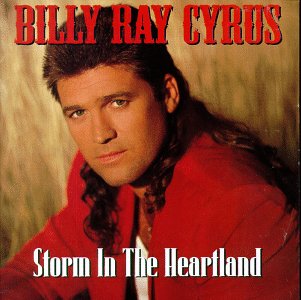n. A website design where a site's main or most visible pages are professionally written, edited, and laid out, while the rest of the site relies on content supplied by volunteers and site visitors.
2008
The latest buzz term in IT circles is the "mullet strategy". It's a technique the big internet sites such as CNN, Youtube and MySpace are now turning to — "business up front, party in the back".
Which, when Billy Ray Cyrus is not in the picture, essentially means real, researched information is now posted up front, and all that indulgent user-generated opining and sledging is being shoved back to the secondary pages.
What's interesting about the mullet strategy is that it represents the first signs of backlash against that heaving mass of people out there who think a domain name gives them licence to share what they ate for breakfast.
Which, when Billy Ray Cyrus is not in the picture, essentially means real, researched information is now posted up front, and all that indulgent user-generated opining and sledging is being shoved back to the secondary pages.
What's interesting about the mullet strategy is that it represents the first signs of backlash against that heaving mass of people out there who think a domain name gives them licence to share what they ate for breakfast.
2008
In the PSFK presentation last week, I encouraged the audience to collect "intellectual appliances" to aid the "pattern cognition." And this morning, I read about the "mullet strategy" and wondered if it might be a candidate. …
According to the mullet strategy, the front page of the website is "kept sharp" by professional editors while the back of the site is given over to the unedited, unsubstantiated "venting" of unpaid visitors.
Could this be an [sic] candidate? Appliances are little machines that help us think. And the mullet strategy might be useful, first of all, as a way of thinking about any website that struggles to combine professional and user created content.
According to the mullet strategy, the front page of the website is "kept sharp" by professional editors while the back of the site is given over to the unedited, unsubstantiated "venting" of unpaid visitors.
Could this be an [sic] candidate? Appliances are little machines that help us think. And the mullet strategy might be useful, first of all, as a way of thinking about any website that struggles to combine professional and user created content.
2007 (earliest)
The biggest sites on the web are all embracing the "mullet strategy" — business up front, party in the back! User generated content is all the rage but most of it totally sucks. That is why sites like YouTube, MySpace, CNN, and HuffPost are all embracing the mullet strategy. They let users party, argue, and vent on the secondary pages, but professional editors keep the front page looking sharp. The mullet strategy is here to stay because the best way for web companies to grow traffic is to let the users have control, but the best way to sell advertising is a slick, pretty front page where corporate sponsors can wistfully admire their brands.

You wanna know what's a mullet? WellSome people claim the term mullet is much older, and that may well be true. However, there is absolutely no written evidence to support this. Even the Oxford English Dictionary lists the Beastie Boys as the earliest citation, and says that they "apparently coined, and certainly popularized" the term.
I got a little story to tell
About a hair style, that's way of life
Have you ever seen a Mullet wife?
